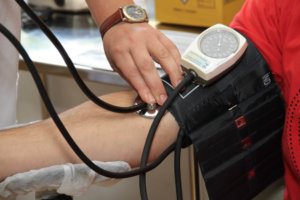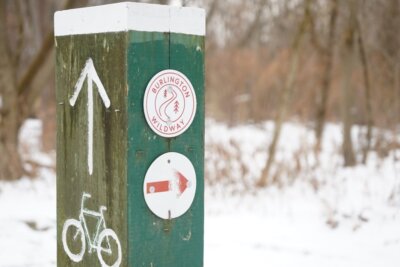Go ahead, get ready for the great outdoors! But carefully.

As we close the door on mud season and approach our state’s beautiful spring and summer months, many Vermonters are switching from indoor exercise to outdoor activities. Both adults and children are participating in spring sports and early summer activities and looking to take advantage of the longer days and extra hours of daylight that come along with the warmer months. This may understandably entice you to dive head first into the activities you were doing last fall and summer. Doing so, however, may lead to injuries that could be prevented with a little time and preparation. Remember, even professional athletes perform an average of four to six weeks of preseason training before the regular season begins.
It is important to train your body in a way that mimics the manner in which the involved muscles are used during a given activity or sport. For example, runners should emphasize strengthening not only the thigh muscles but also include exercises that strengthen the hip and abdominal muscles; this is also true for hikers and long distance walkers. Racquet sports such as tennis, pickle ball and badminton, require strengthening the rotator cuff and upper back muscles. Strengthening these areas is also beneficial for baseball, softball, paddling sports, volleyball and swimming. In order for golfers to efficiently swing their clubs, they must work on shoulder flexibility and back and hip range of motion. Cyclists should emphasize lower body strengthening and shoulder/neck mobility exercises as these areas are often involved with bicycling injuries. If you participate in a sport that requires good cardiovascular function, it is a good idea to do some form of conditioning and endurance training in addition to strength training.
Of course, the examples above do not cover all of the training techniques required to prevent injury and improve performance. Make sure to consult your physical therapist or a health care professional for a more individualized program or for answers to more specific questions and concerns.
Take it slowly, slowly
With the excitement of warm weather after a long winter, many of us make the mistake of increasing our activity level too quickly. You will reduce your risk of injury and increase your body’s ability to adapt by gradually increasing the frequency, intensity, time and type of exercise based on your individual goals. Adjust the number of times you exercise per week to reflect your current fitness level, the time you realistically have available, your other commitments like family and work, and the goals you’ve set for yourself. My general recommendation is begin with exercising three to four times per week and gradually increase the duration and intensity of exercise by 10 percent each week. Remember, your body needs adequate rest between exercise sessions for optimal results.
Adjusting the type of exercise you do is also important. For example, if you have not run all winter, start off with walk-run intervals instead of trying to start where you left off.
Delayed onset muscle soreness, which typically develops 12 to 24 hours after the exercise has been performed, with the greatest discomfort occurring between 48 and 72 hours, is a normal part of exercise caused by placing unaccustomed loads on the muscle. This type of soreness is different from acute soreness, which is pain that develops during the actual activity. If you are experiencing discomfort that falls outside these general parameters—if, for example, pain lasts than greater than 72 hours after exercise—you may have more serious tissue damage and will need to consider adjusting your program.
Stay hydrated
With hot weather, it becomes even more important to stay properly hydrated. General guidelines include drinking 17 to 20 ounces of water two to three hours before you begin exercising. Consuming eight ounces of water 20 to 30 minutes before exercising or during warm up is also a good idea. Aim to drink seven to 10 ounces of water every 10 to 20 minutes during exercise and eight ounces no more than 30 minutes after you finish your workout or sport. Prolonged, intense exercise may require a drink that includes electrolytes. Keep in mind, the more you sweat, the more water you lose. Therefore, you must replenish fluids adequately.
Warm up, cool down
A proper warm up and cool down are highly encouraged for both adults and children. A five-to-10 minute warm up that includes dynamic motions such as stretching with movement will significantly reduce your risk of injury. This is because you are moving your muscles in a way that mimics your body’s movement while performing a given sport or activity. Cooling down with static stretching is also essential to lengthen your muscles after they have undergone increased demand and load.
Even with the most detailed preparation program, not every injury can be prevented. Having said that, however, injuries can be significantly reduced by focusing on improving endurance and conditioning, muscle strengthening, flexibility and joint range of motion. Pursuing an appropriate exercise program will likely reduce your risk of injury and improve your performance, thereby making your outdoor experiences much more enjoyable!
Katherine Spencer holds a doctorate in physical therapy and works at Dee PT in Shelburne. She can be reached via email. She lives in South Burlington.
Related Stories
Popular Stories
If you enjoy The Charlotte News, please consider making a donation. Your gift will help us produce more stories like this. The majority of our budget comes from charitable contributions. Your gift helps sustain The Charlotte News, keeping it a free service for everyone in town. Thank you.
Andrew Zehner, Board Chair









